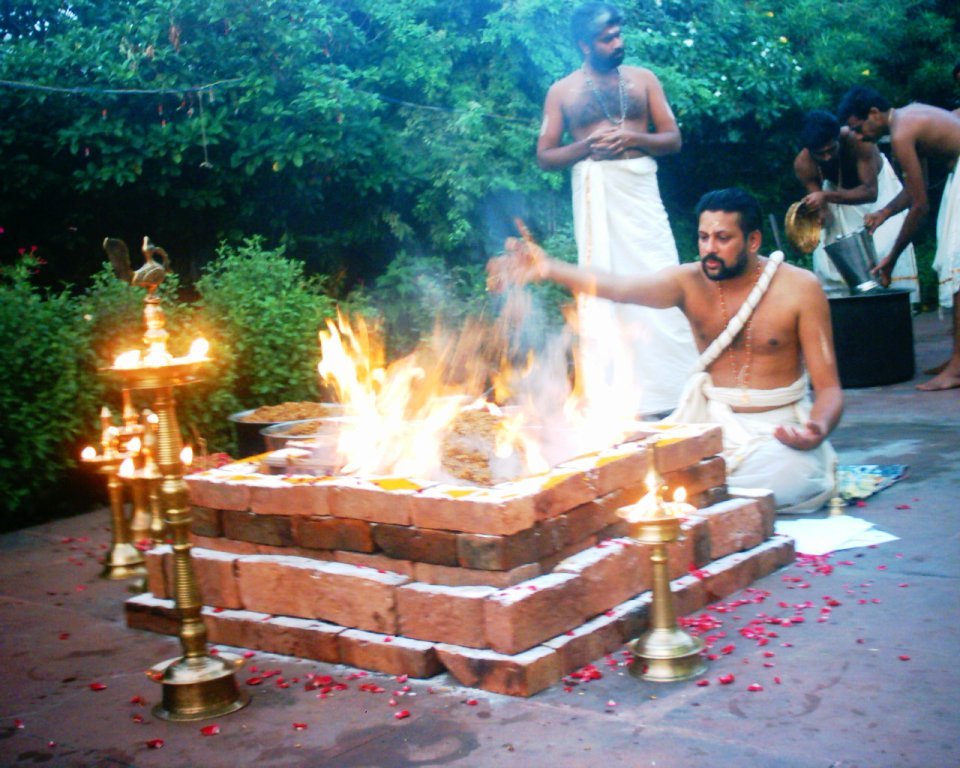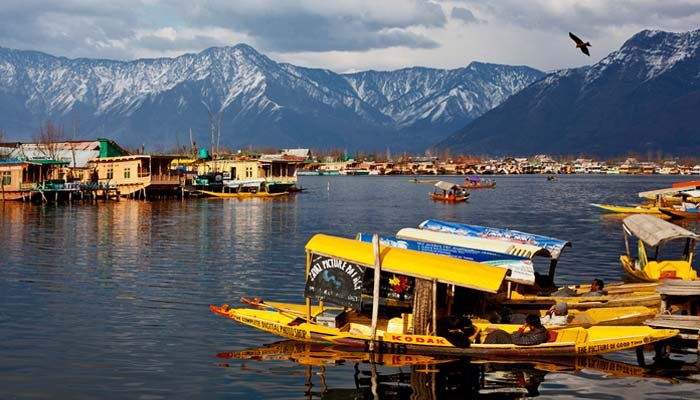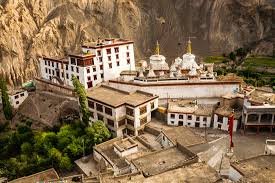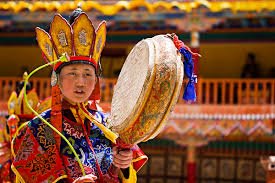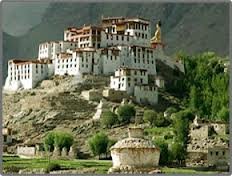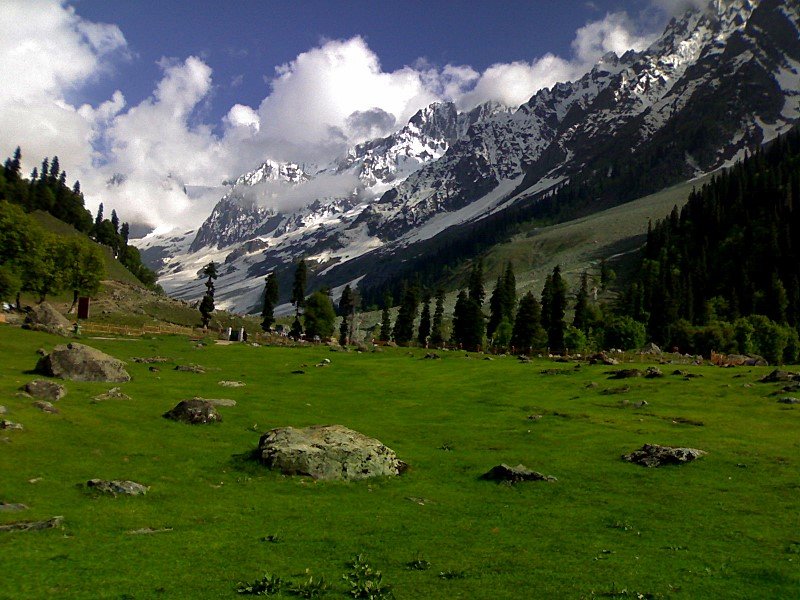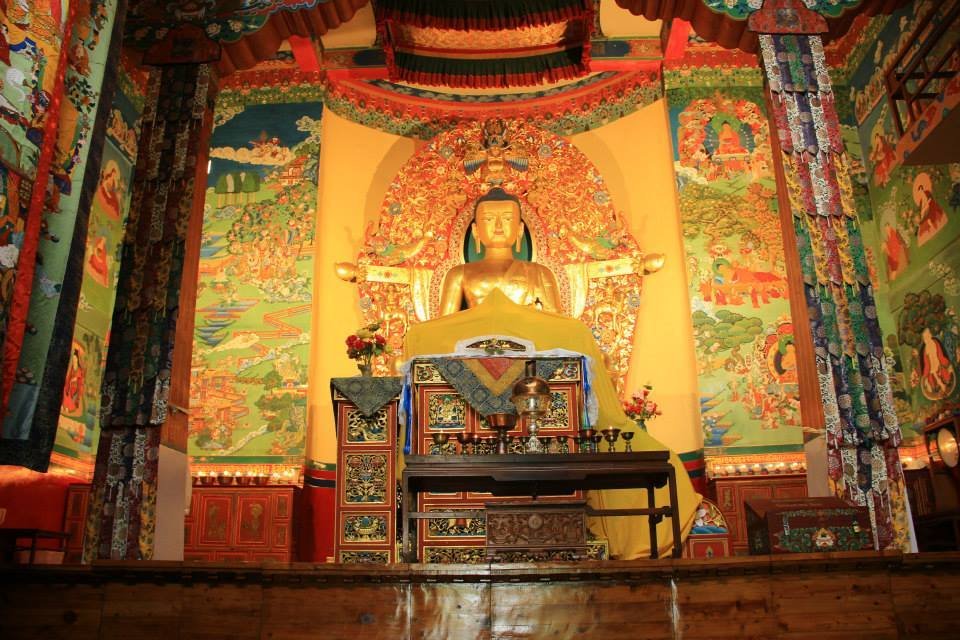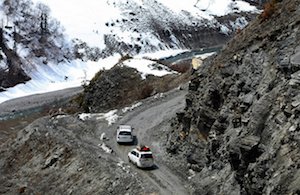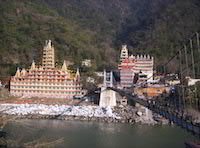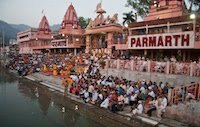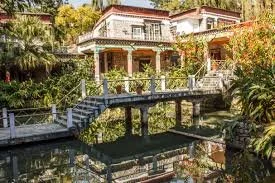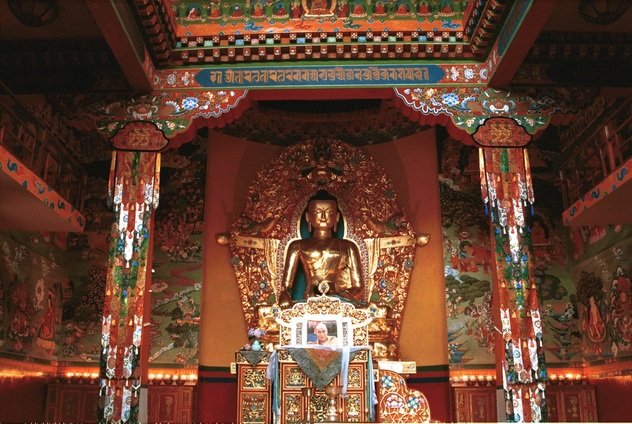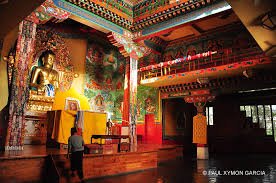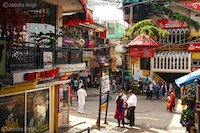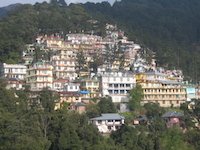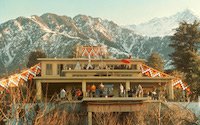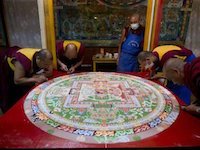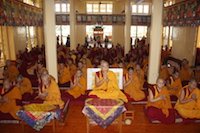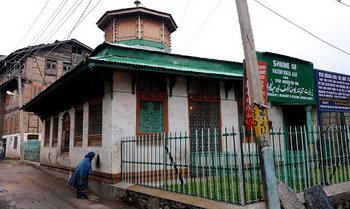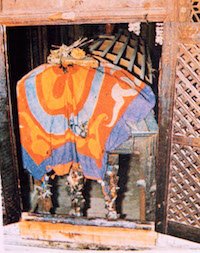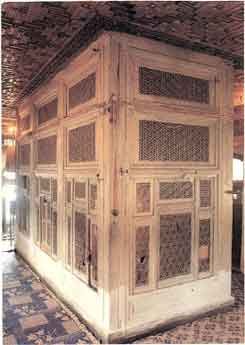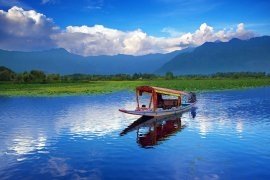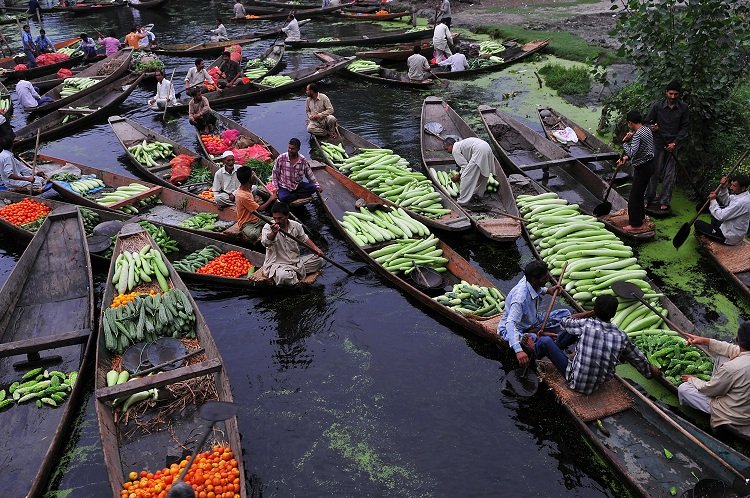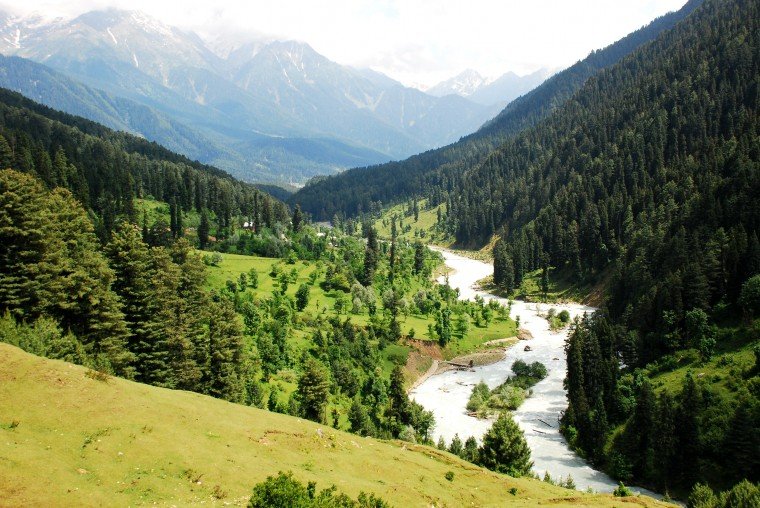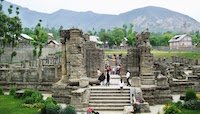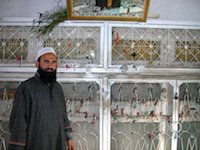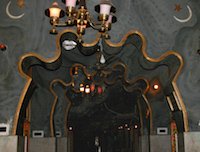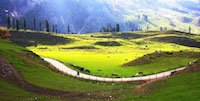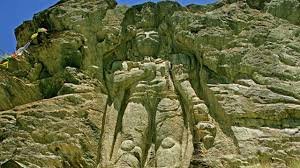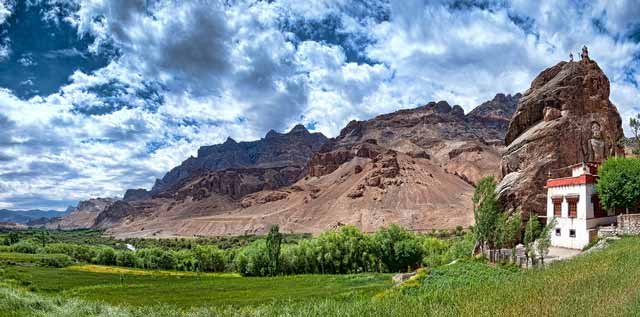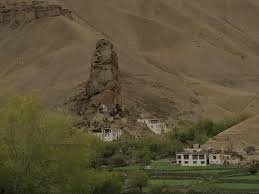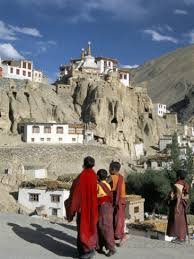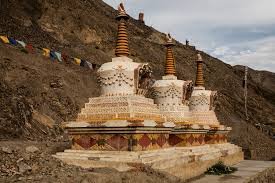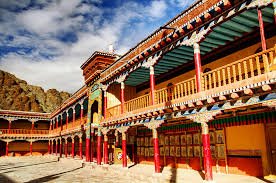WALKING IN THE FOOTSTEPS OF JESHUA
INDIA 2016 TOUR ITINERARY
We are using a reputable local travel company, Ancient India Travels Pty Ltd that has professional expertise in organizing spiritual tours in India and has been personally referred to us.
Sep 26 Monday/Day 1: Arrive Delhi
Accommodation: Hotel Lalit or Oberoi Maidens
You will be met at the airport on arrival and transferred to the hotel.
PLEASE NOTE: Most flights arrive in the late night or the early am. Check-in time is generally 2 pm but the hotel will give you access to the room as early as 12 noon if it is available (no guarantee). This means that if you arrive past midnight, your choice is to either arrive on the date of Day 1 and pay extra cost of additional hotel night for immediate check-in on arrival, or arrive early am date of day 2 for immediate check in at no additional cost.
YOU WILL NEED TO ADVISE US AS SOON AS POSSIBLE IF YOU REQUIRE EXTRA NIGHTS.
Sep 27 Tuesday/Day 2: Delhi (B,L,D)
Accommodation: Hotel Lalit or Oberoi Maidens
7-9am: Breakfast
9-10:30am: Gather for session with Ishtar.
Independent time for the remainder of the morning to recuperate from the flight.
Jama Masjid, Delhi
After Lunch: This afternoon, a half day tour. Start the guided tour of the old town (Shahajahanabad), once surrounded by walls of red sandstone. The old town, a picturesque maze of narrow streets, is divided into two parts by the way 'of Silver', a succession of shops and colorful bazaars. In the same area you can visit the Jama Masjid, built in 1656. Designed by Ustad Khlil and constructed by Emperor Shah Jahan, it is the largest and the most splendid mosque in India. The mosque is made of glowing red sandstone inlaid with marble and brass and has three majestic black and white marble domes.
Tomb of Mahatma Ghandi, Delhi
We will also visit the Mausoleum of Mahatma Gandhi - It is a black marble platform that marks the spot of Mahatma Gandhi's cremation, Antyesti (Antim Sanskar) on 31 January 1948, a DAY after his assassination. It is left open to the sky while an eternal flame burns perpetually at one end. Also we will visit the central districts where we find the India Gate, a war memorial arch built in honour of 90,000 Indian soldiers who lost their lives in World War I. Here there is a perpetual flame of Amar Jawan Jyoti, the eternal flame in tribute to all martyred soldiers in India.
Lunch: Chor Bizzare at Broadway Hotel (old Delhi)
Return back to hotel.
After dinner: Session with Ishtar.
Sep 28 Wednesday/Day 3: Delhi – Haridwar- Rishikesh / (B,L,D)
Accommodation: Divine Resort
Rishikesh is one of the places that Jeshua stopped at on his way north to Srinagar in Kashmir when he was trying to avoid being killed by the Brahmins further south in the east because he preached against the caste system.
7am: Meditation with Ishtar
8am: Breakfast
10am: Morning drive to Rishikesh en route stop at Haridwar
Lunch: Hotel Godwin (Vegetarian Meal) in Haridwar
Neel Parvat Temple
Afternoon: Visit the Neel Parvat Temple, dedicated to the Goddess Chandi Devi (Durga). The temple is on top of a hill overlooking the Ganges and about 6 km (3.7 miles) from Haridwar. We get up to the temple via a ropeway. Local Indian women will be there performing devotionals to the goddess. Our group will spend an hour here in meditation. NOTE: This is an active temple with many locals coming all day long, so the area will not be silent.
After visit, return back to Rishikesh. On arrival, check in at Divine Resort and overnight stay.
After dinner: Session with Ishtar.
Sep 29 Thursday/Day 4: Rishikesh (B,L,D)
Accommodation: Divine Resort
7-8am: Meditation session with Ishtar
8-9am: Breakfast
9.30am: After breakfast, enjoy a walking tour. There are many shops stocked with spiritual books and music, clothes, articles of spiritual nature along the path.
Sivananda Ashram
We will visit inside Sivananda Ashram and Swarg Ashram opposite Sivananda. Swarg Ashram is the epicenter of yoga and meditation in Rishikesh. Often there are morning kirtans and we can attend/participate. The timing of this will be determined closer to the date.
Lunch: At hotel
Afternoon: We cross the Ram Jhula (now called the Sivananda Bridge) to participate in a private Homa Ceremony near the ghats (refers to a series of steps leading down to a body of water, particularly a holy river) which will be exclusive for our group. We will be required to wear Indian dress. The Shanti havan lasts for about 2 Hours.
During the ceremony, various forms of the Divine are invoked in a sacred fire while Sanskrit mantras are chanted. The energetic vibrations that are invoked during a traditional Vedic fire ceremony represent the most powerful presence of the Divine on earth.
The combination of the powerful energy of the fire and the Sanskrit mantras creates extremely auspicious and purifying vibrations that are beneficial to all who attend the homa. It is believed that the smoke that rises from a homa contains a powerful healing energy, and as it rises to the heavens it purifies the atmosphere, both physically and subtly, encouraging a peaceful environment and gentle weather. Even the damaging effects of natural catastrophes can be reduced through the performance of homas. The element of fire is associated with the upward motion of the divine kundalini energy and is considered to be the most powerfully purifying element. Every kind of negative karma can be purified by the sacred homa fire due to divine grace.
We participate using flowers and drawing Rangolis- religious diagrams on the floor with rice and colored powder similar to the mandalas done by the Buddhists. Each person will be given a personal receptacle to perform the ceremony and Indian dress; kurta, pyjasma for both men and women with a turban or cap for men and a chunni (head scarf) for the women to wear during this ceremony. Each one will be individually blessed by the head priest and offered prasad (an offering). The timing of the HOMA has to be at a special holy time decided by the priest. Usually Hindus perform such an important ceremony after a bath, with fresh clothes, partake of Prasad and have their first meal after the ceremony.
After the ceremony we will attend the Ganga Aarti (ceremony performed by a Hindu priest on the banks of the Ganges River).
Return back to hotel.
After dinner: Session with Ishtar.
Sep 30 Friday/Day 5: Rishikesh - Chandigarh (B,L,D)
Accommodation: The Lalit Hotel
7-8am: Meditation with Ishtar
8am: Breakfast
9am: Check out and morning drive to Chandigarh. On arrival, check in at hotel.
Lunch: At Hotel
Afternoon: Visit Chandigarh City:-
Rock Garden
Rock Garden - It's a sculpture garden made by one man Mr. Nek Chand. Its consists of man-made interlinked waterfalls and many other sculptures that have been made of scrap & other kinds of wastes(bottles, glasses, bangles, tiles, ceramic pots, sinks, electrical waste, etc.)
Sukhna Lake - Sukhna Lake is an artificial lake at the foothills of the Himalayas, the Shivalik hills. This 3 km² rainfed lake was created in 1958 by damming the Sukhna Choe, a seasonal stream coming down from the Shivalik Hills. It is an amazing site to visit to refresh yourself.
Rose Garden - Zakir Hussain Rose Garden, is a botanical garden spread over 30 acres of land with 50,000 rose-bushes of 1600 different species. Named after India's former president, Zakir Hussain and created in 1967.
We will sit and meditate in these places.
After visits, return to hotel.
After dinner: Session with Ishtar.
Oct 1, Saturday/Day 6: Chandigarh – Dharamsala (Mcleod Ganj) / (B,L,D)
Accommodation: The Pride Surya Mountain Resort
7-8am: Meditation with Ishtar.
8-9am: Breakfast
9.30am: Drive to Dharamsala (Mcleod Ganj) en-route visit Norbulinka Institute, a major centre for Buddhist teaching and practical work. Named after the summer residence of the Seventh Dalai Lama, it was set up to ensure the survival of the Tibetan Buddhism cultural heritage. Over 100 students learn a variety of crafts in wood, metal, silk and thangka painting. The temple has a 4.5 meter (15 foot) high gilded statue of The Buddha and over 1000 painted images.
Lunch: At hotel
Afternoon: Drive approximately 30 minutes to visit the center of Tibetan Medicines & Astrology. We will spend about an hour here.
Then continue to the Church of St. John in Wilderness
Arrive at the headquarters of Tibet in Exile, Dharamsala. This is the heartland of Buddhism within India. The town is divided into two section: Dharamsala and McCleod Ganj. We stay in McCleod Ganj where the Dalai Lama lives when in India. We plan to reach McCleod Ganj at about 04-30 pm. Check-in to the The Pride Surya Mountain Resort.
Dinner: At the hotel restaurant and overnight stay.
After dinner: Session with Ishtar.
Oct 2, Sunday/Day 7: Dharamsala (Mcleod Ganj) (B,L,D)
Accommodation: The Pride Surya Mountain Resort
6am: We shall depart the hotel for a 10 minute walk to the Namgyal Monastery (Dalai Lama's monastery) to witness the monks chanting and in meditation. It is possible to be invited inside to sit around the exterior of their circle and participate. Afterwards, you may be so lucky (we cannot guarantee) as to be blessed by the head lama with a kotta (white cloth placed around one's neck).
The Namgyal Monastery, which houses the Buddhist School of Dialectics, also known as the "Tsuglagkhang" (cathedral) is opposite the Dalai Lama's residence. It resembles the center of a similar one in Lhasa. Inside are large gilded bronze statues of the Buddha and it is a good place to chat with the monks.
Next to the Tsuglagkhang is the Kalachakra Temple with modern murals of mandalas - protectors of the Dharma, as well as Buddhist masters, with the central image being of the Shakhyamuni. Sand Mandalas are constructed throughout the year. This temple is particularly important as it practices Kalachakra Tantra, which is instrumental in bringing about world peace and harmony. If the Dalai Lama is in Dharamshala he leads the prayers on special occasions.
Afterward, join the locals for a walk circumambulating the monastery complex. It is a breathtaking and inspiring experience that is not to be missed. The walk will take 20-30 minutes, depending on how long you care to linger at the mid-point, where there are large prayer wheels and often monks chanting and playing music while locals pray at the chortens.
8.30-9am: Breakfast at hotel
11am: Session with Ishtar for the rest of the day.
1-2pm: Lunch break at the hotel.
Dinner at hotel and overnight stay at hotel.
Oct 3 Monday/ Day 8: Dharamsala- Jammu - Srinagar (B,L,D)
Accommodation: Solar Residency
7-8am: Meditation with Ishtar
After breakfast: Drive to Jammu airport. On arrival transfer to Airport & board flight for Srinagar
INTERNAL FLIGHT TO SRINAGAR
Departure: 6E 559 Jammu Ore 14-05pm
Arrival: Srinagar Ore 14-50pm
On arrival, transfer to hotel and overnight stay at hotel.
After dinner: Session with Ishtar.
Oct 4 Tuesday/Day 9: Srinagar (B,L,D)
Accommodation: Solar Residency
7-8am: Meditation with Ishtar.
8-9am: Breakfast
9.30am: Visit to the tomb of Jesus, also called Roza Bal or Rauza Bol (“tomb of the prophet”), located in Khanyaar, a downtown area 4 km from Dal Lake. In 1894 a convert from Judaism to Orthodox Christianity named Nicolas Notovitch (1858 to 1916) published a book 'Life of Saint Issa, Best of the Sons of Men' in French. It describes a gospel discovered at a Hermis Buddhist monastery in Ladakh, about the missing life of Jesus in fourteen chapters. This provoked interest because the shrine was relatively unknown until the founder of the Ahmadiyya Muslim Community, Mirza Ghulam Ahmad, claimed in 1899 that it is actually the tomb of Jesus. This belief is shared by many Ahmadis today, though the local Sunni caretakers of the shrine believe that 'the theory that Jesus is buried anywhere on the face of the earth is blasphemous to Islam'.
Afterwards, an excursion to oldest part of the Srinagar city. We will visit the outside Shahi Hamdan Mosque (we are not permitted to enter). We will then walk through the decorated bazaar of Srinagar city and also see the ancient wooden bridges.
Mughal Gardens
Continuing, we will drive to the amazing Mughal Gardens, built by the Mughals in the Islamic style of architecture which was greatly influenced by the Persian concept of the ‘char-bagh,’ where a garden is symmetrically divided into four smaller quadrilaterals by axial walkways.
Shalimar Bagh
Shalimar Bagh, built in 1619 A.D by Emperor Jahangir, is surrounded by a brick and stone wall. The garden is arranged in four terraces lying one above another of nearly equal dimensions. The fourth terrace was for the exclusive use of the ladies of the harem, providing them excellent views of the vistas around. The terraces feature beautiful stone chutes, carved with numerous ingenious patterns of shell and fish, leading to the reservoir with fountains and canals. The highest terrace also has a black pavilion etched with the famous inscription by Amir Khusrau, ‘Gar Firdaus rōy-e zamin ast, hamin ast-o hamin ast-o hamin ast’ (If there is a paradise on Earth, it is this, it is this, it is this.)
Pari Mahal
A tour of the famous Mughal Gardens cannot be complete without a visit to another architectural masterpiece of the Mughals, the splendid Pari Mahal. Once the royal observatory, Pari Mahal has a well laid out garden with spectacular views of the Dal Lake and its surroundings. Our group will sit in meditation at Pari Mahal.
In the afternoon we will take a Shikara ride on Dal Lake and pass through the small canals to see the local life, ancient houses, agricultural fields and paper maché handicraft-the specialty of this area.
After dinner: Session with Ishtar.
Oct 5 Wednesday/Day 10: Srinagar-Phalgam (96 Km) (B,L,D)
Accommodation: Hotel Kolahoi Green Resort
7-8am: Meditation with Ishtar
8-9am: Breakfast
9.30am: Drive to Phalgam 2440 Mtrs (Vale of Kashmir). On the way visit the saffron fields and the Avantipur Ruins, an 1,100-year-old temple.
We will reach Phalgam by lunch time and lunch at the hotel. After lunch we will enjoy the natural beauty of the valley. The rest of the afternoon we sit in outdoor meditation in the garden of the hotel.
Optional: Browse the local bazaar, which is surrounded by hills, about 3 km from our hotel.
After dinner: Session with Ishtar.
Oct 6 Thursday /Day 11: Phalgam - Srinagar (B,L,D)
Accomodation: Solar Residency
7-8am: Meditation with Ishtar
8-9am: Breakfast
9.30am: Depart and drive to Aishmuqam Shrine and Cave. The historical shrine of Hazrat Azin-ud-Din Wali is situated on a hill, about 20 km from Phalgam.
Within the Aish Muqam is a sacred relic called the 'Moses Rod' or the 'Jesus Rod', which local legend says, belonged to Moses himself. Jeshua is said to also have held it, perhaps to confirm his Mosaic heritage and some say he walked with it when he was teaching his ministry in northern India.
The rod was the most prized possesion of saint Zainuddin Wali, who lived in the 14th century AD, and it was given to him by Sheikh Noor Din Wali. The staff is still in the Reliq room and is considered the most valuable relic of the region.
When the people perceive themselves to be under an emergency, like an epidemic, famine etc, they make a pilgrimage to Aish-Muquam, and are confident of being helped by the miraculous powers of the staff.
The cave: Sheikh Zain-ud-din who lived in the 15th century AD, was one of the principal disciples of Sheikh Nur-ud-din. Legend has it that Zain-ud-din meditated for a long time in village Mandjan of Tehsil Sopore where he attained spiritual enlightenment. It was at this stage that Sheikh Nur-ud-din advised him to migrate to the cave at Aishmuqam and to meditate there for the remaining period of his life. On his arrival, Sheikh Zain-ud-din found the entrance to the cave blocked by snakes, cobras and reptiles. It is said that the saint carried with him a club which he had received from his master. Seeing the serpents he placed the club on the ground and it was instantaneously transformed into a dreadful cobra. The snakes in the cave surrendered to the Sheikh, vacating it and migrated to the village Phuurpujan about 16 miles to the east of Aishmuqam.
From here, proceed to Martand Sun temple. We will sit in meditation at the Sun Temple.
The Martand Sun Temple was a Kashmiri Hindu temple dedicated to Surya (the solar deity in Hinduism). Martand is another Sanskrit name for the Hindu Sun-god. Now in ruins, the temple was built by the third king of the Karkota Dynasty, in the 8th century CE. The foundation of the temple is said to have been around since 370-500 CE, with some attributing the construction of the temple to have begun with Ranaditya. The temple was completely destroyed on the orders of Muslim ruler Sikandar Butshikan in the early 15th century, with demolition lasting a year.
Continue the drive to Srinagar and overnight stay at hotel.
After dinner: Session with Ishtar.
Oct 7 Friday/ Day 12: Srinagar-Sonmarg-Kargil (205 Kms/ Approx 7 Hrs) / (B,L,D)
Accommodation: Hotel Highland Mountain Resort
8am: We depart to drive to Kargil. The road passes through the panoramic village to reach Sonmarg (2740 Mtrs). After Sonmarg it is mostly a rough road to Zojila Pass (3527 Mtrs), which is the Gateway of Ladakh.
(The drive from Srinagar to Sonmarg is approx 2 hours and then onward to Kargil is another five hours of amazing mountain scenery.)
We stop here for tea and passport check at Drass. It can be very cold here.
Another two and half hours, and the drive will take us to Kargil (2710 Mtrs), which gained importance after the opening of Ladakh for tourists in 1974.
Dinner and overnight stay at hotel.
After dinner: Session with Ishtar.
Oct 8 Saturday/ Day 13: Kargil – Leh (235 Kms) / (B,L,D)
Accommodation: The Zen Ladakh 4* deluxe centrally located, indoor hot water pool
8am: Depart for a full day drive to Leh. It will be tiresome but panoramic too. We will ascend three passes.
The first stop is the Buddhist village Mulbek where we visit Mulbek Monastery. Then we will go 1km to the Chamba Statue of Maitreya built into the side of the mountain. We will spend some time in meditation here.
We then cross the highest pass (Fotu la 13749 ft.) on the Srinagar-Leh route.
The next stop is Lamayuru Monastery, the oldest in Ladakh. It is believed to have been a sacred site for the pre-Buddhist religion called Bon. This fascinating 10th century monastery is located in a spectacular setting overlooking verdant farming terraces and is home to some of the finest frescos, carpets and tangkhas we will see. The complex includes one of the oldest libraries in the region, containing extensive books and other literature on the TibetanKagyupa Sect.
Lunch: At Lamayuru.
Afterwards, we continue the drive to the next village, Nimu, with a view of Zanskar River following into Indus. Finally we reach Leh, which is 3500 metres above sea level.
Thiksey Monastery
Oct 9 Sunday/Day 14: Leh – Monasteries (B,L,D)
Accommodation: Zen Ladakh
5.30am: 30-minute drive to observe the praying ceremony at Thiksey Monastery, starts at 6 am.
Thiksey has 12 levels, which rise impressively on a rocky hillside. This gompa outdid Shey by constructing a fifteen-meter-high clay statue of the Buddha to commemorate the 1970 visit of the Dalai Lama.
We will continue the drive (30 minutes) to Hemis Monastery, one of the most famous monasteries of the Ladakh region. Founded in 1630's by Stag-tsang-ras-pa under the royal patronage of Sengge Namgayl, Hemis is one of the largest and richest gompas of Ladakh. It is said Jeshua stayed here and that the monks have scrolls that tell of his journey through India.
Lunch: Packed lunch as there are no restaurants at Hemis. This way we can spend a good amount of time in meditation at the monastery.
On the way back to Leh, we visit Shey Palace and Choglamsar Monastery.
Shey, built in 1645 as a summer residence for the kings of Ladakh, is the oldest palace in Ladakh. The adjacent gompa houses a gilded copper two-story image of the seated Buddha.
Choglamsar is just 14 km from Leh town. It was HH the Dalai Lama's summer residence during his teachings in August 2007 and July 2014. Choglamsar was given to the Tibetan refugees by the Indian government. It was a stretch of gravel at the banks of the Indus river without water supply or any infrastructure. Now it is a flourishing part of the Ladakh capital Leh. There is small new monastery as well.
After dinner: Session with Ishtar.
Oct 10 Monday/Day 15: Leh – Sham Region – Leh (B,L,D)
Accommodation: Zen Ladakh
7-8am: Meditation session with Ishtar.
8am-9am: Breakfast
Lakir Gompa
10am: We’ll depart and drive 6km north to the Likir Gompa. This gompa is one of the oldest and most well maintained monasteries in Ladakh. Likir Gompa is not only large, it is also wealthy with about 100 monks residing here.
Alchi Monastery
We then continue 1.5 hours to Alchi Monastery, which is approximately 1000 years old. A temple called Dhu-Kang dates back to 11th century or 12th century and houses some of the well preserved Indo-Himalayan style magnificent wall paintings. The Alchi monastery is not only a place of worship for Buddhists but a study centre too. It is a monastic complex of temples that consists of three shrines: the Dukhang which an Assembly hall, the Sumtseg and the temple of Manjushree.
We will spend some time in meditation here.
Lunch: Packed lunch.
Return to Leh by evening.
Oct 11 Tuesday/Day 16 Leh-Delhi (B,L,D)
Accommodation: The Pride Plaza (Near airport)
6am: Early breakfast
6.30am: Transfer to airport for flight to Delhi,
INTERNAL FLIGHT TO DELHI
Departure: AI 446 Leh 8am
Arrival: Delhi 9.20am
Upon arrival in Delhi transfer to the hotel.
Lunch: Hotel restaurant.
Afternoon: Session and closing ceremony with Ishtar.
Dinner: Hotel restaurant
Check out is on the morning of October 12. Breakfast is not included for October 12.
Transfer to airport for flight home.
If you are travelling onto Nepal (optional extra tour) with us then you will need to make sure you book a return flight out of Kathmandu and not Delhi.

